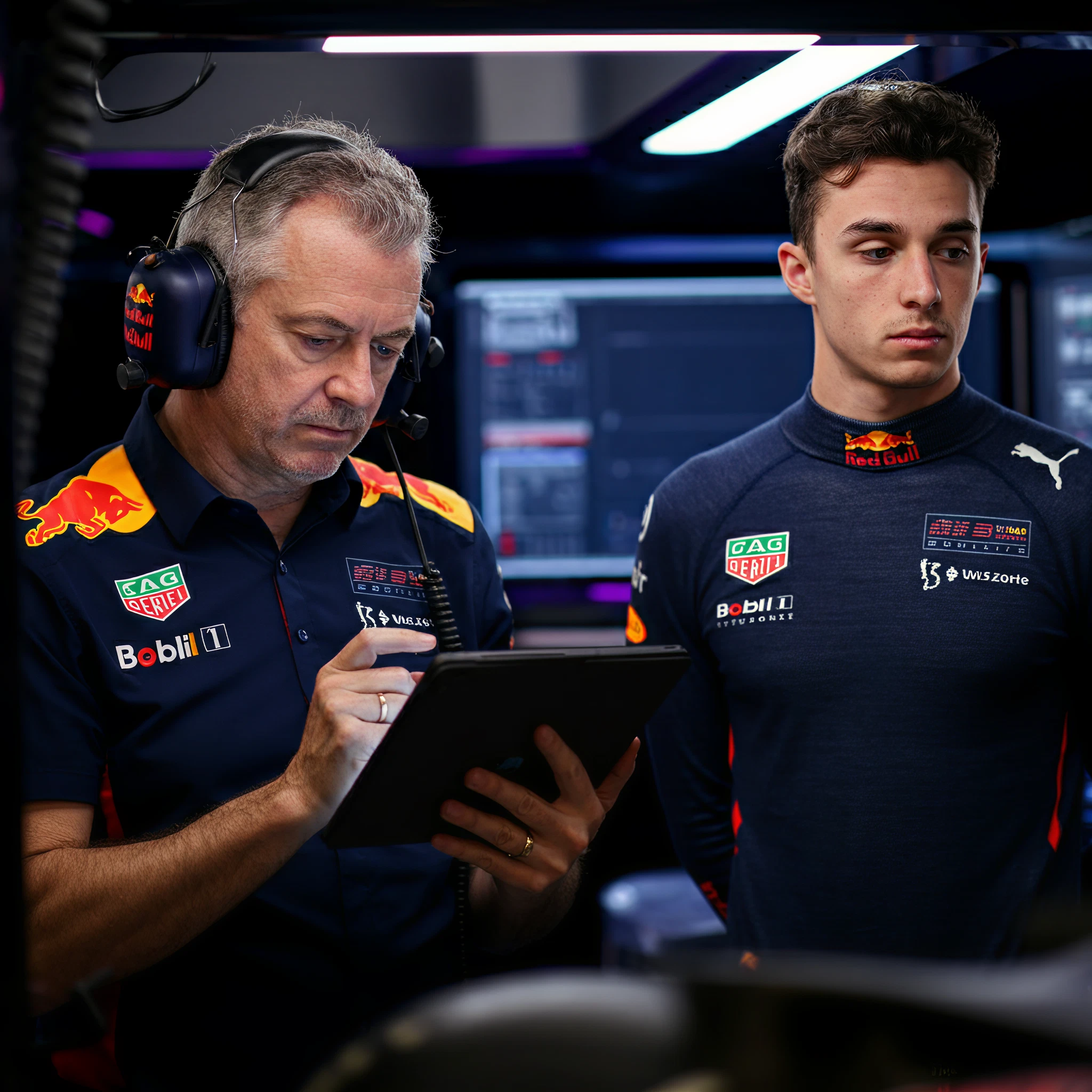Liam Lawson, the young up-and-coming Formula 1 talent, has undeniably shown flashes of brilliance on the track. His entry into the Red Bull Racing landscape brought excitement, but it’s also come with its fair share of challenges. Recently, Bernie Collins, a respected technical expert and former F1 strategist, weighed in on Lawson’s performance and highlighted critical factors that could explain the New Zealander’s struggles in the Red Bull setup.
But what exactly did Collins discover, and could it hold the key to unlocking Lawson’s full potential? Let’s dig deeper into the dynamics.
The Weight of Expectations at Red Bull
Driving for Red Bull Racing, a team known for its competitive edge and championship-winning pedigree, often becomes a sink-or-swim situation. For Liam Lawson, stepping into Red Bull’s ecosystem meant he was walking into one of the most pressurized environments in motorsport.
Competing alongside seasoned stars like Max Verstappen and facing the unforgiving nature of F1’s team dynamics meant Lawson had to hit the ground running. Bernie Collins, who has a wealth of strategic experience in F1, suggested that the immense expectations placed on young drivers at Red Bull might contribute to Lawson’s performance inconsistencies.
“Driving for a team like Red Bull brings intense scrutiny,” says Collins. “It’s not just about raw talent; it’s about adapting to the relentless pace of development and delivering results consistently.”
Understanding Red Bull’s Car Philosophy
Another aspect Collins pointed out is Red Bull’s car design philosophy, which often suits drivers with specific driving styles. The RB19, like its predecessors, is notoriously tailored for Max Verstappen’s aggressive cornering approach and preference for a strong front end. For Lawson, adapting to such a vehicle might be less intuitive.
Collins believes this tailoring could partially explain Lawson’s struggles. “Red Bull develops their car around Verstappen’s strengths, which is a smart move for a title-challenging team. But for someone stepping in new, like Liam Lawson, it can feel like fighting the car instead of working with it,” she explained.
This challenge isn’t unique to Lawson. Other drivers within Red Bull’s orbit, such as Alex Albon and Pierre Gasly, have also faced similar issues in the past when trying to adapt to the team’s finely tuned car characteristics.
Lawson’s Limited Track Time
Formula 1 is an environment where experience counts for everything. Bernie Collins has also highlighted that, unlike Verstappen or Sergio Perez, Lawson simply hasn’t had the luxury of accumulating the same amount of track time. Time behind the wheel is absolutely critical for honing strengths, understanding the car, and implementing team feedback.
Collins noted, “Lawson’s limited opportunities to drive the car in competitive conditions make the learning curve much steeper. Red Bull’s promotion system can be ruthless, and unfortunately, that leaves little space for extended development.”
For Liam, this lack of consistent race-time experience compared to more seasoned drivers puts him at a natural disadvantage.
Potential Fixes for Lawson’s Struggles
Bernie Collins has candidly suggested a roadmap for addressing some of the hurdles Lawson faces. For starters, increasing simulator work and allocating more focused feedback sessions could provide Lawson with more insights into how to adapt his driving style to Red Bull machinery.
Additionally, Collins believes Red Bull could consider tweaking their rigid development processes to make the car setup slightly more adaptable for all their drivers. While Verstappen’s preferences are naturally prioritized, helping younger talents like Liam Lawson thrive could benefit Red Bull in the long term, building depth within their driver lineup.
Finally, Lawson himself could benefit from additional technical mentorship. Learning to extract maximum performance from an F1 car at this level often hinges on understanding minute technical nuances.
The Bigger Picture for Red Bull and Lawson
Liam Lawson’s entry into Red Bull has been far from smooth sailing, but as Bernie Collins’ analysis shows, the reasons for his struggles are far more nuanced than just personal performance. The interplay between team dynamics, car design philosophy, and experience levels shines a light on why young talents often face challenges when stepping into top-tier F1 teams.
Whether or not Red Bull takes steps to address these hurdles could determine not just Lawson’s future but also the long-term sustainability of their driver development program. Bernie Collins’ insights remind us that succeeding in Formula 1 is rarely a solo effort. It takes the right mix of talent, adaptability, and support systems to thrive.
For F1 fans and Red Bull supporters alike, one question remains excitingly open-ended: Can Red Bull create a pathway for Lawson to shine as brightly as Verstappen? Only time will tell.
Join the Conversation
What do you think about Bernie Collins’ analysis of Liam Lawson’s struggles? Do you believe Red Bull’s car philosophy truly hinders younger drivers? Drop your thoughts in the comments below!








